Technical tips from Melissa Coppel
Cacao Barry® ambassador Melissa Coppel, has been recognized for her exceptional chocolate artistry in the US. Throught her various experiences, she perfect her techniques and agreed to share her tips with us through chocolatier focus applications.

Apple Pie Bouchée
Being technically correct is important, but what about being creative? Isn’t it as important?
One of my favorite phrases to explain my creative thinking process is “Learn the basics, then forget about them.”
When you take chances, and do what you’re not supposed to do, real creativity blooms.
This “Apple Pie Bouchée” is a great example of what I have been working on for the past few years. The chocolate dessert bar is a concept where a plated dessert is in a bar or bonbon.
There is only one rule I have when making a new dessert bar: to recreate the original flavors of the “dessert” we are making. If it doesn’t remind us of the original, then it is not a successful creation, and we need to start over.

Cheesecake bar
AW (activity of the water) is an essential value, and it will give us a hint of a product's shelf life or durability.
Water contained in food can be tied or free. Measuring AW will let us know if there’s free water in a product. Free water is the water available for microorganisms to live and reproduce.
The AW value can be measured in a device called an AW meter. The value is measured on a scale from 0 (no free water) to 1 (pure water).
AW MEASUREMENT CHART:
|
AW MEASUREMENT |
SHELF LIFE |
|
1.00 - 0.95 |
1 to 2 weeks |
|
0.95 - 0.91 |
2 to 3 weeks |
|
0.90 - 0.87 |
2 to 4 weeks |
|
0.86 - 0.80 |
3 to 6 weeks |
|
0.80 - 0.75 |
5 to 15 weeks |
|
0.74 - 0.65 |
12 to 20 weeks |
|
0.64 - 0.60 |
15 to 30 weeks |
|
0.5 |
15 to 50 weeks |

Passion fruit, Almonds, Vanilla & Haiti chocolate bonbon
I developed the decor technique mentioned above a few years ago. I didn’t play around with it much then, but I have since revisited the idea, and I got really nice results.
The effect I wanted to achieve was to have a glossy look but also somehow translucent. I also wanted to move away from relying on my spray gun.

Parmesan Hazelnut bonbon
No one talks about this, but in my opinion, a big part of a bonbon’s success is finding the right ratio between couverture shells and the filling. Picking the right mold and the right couverture is as important as finding a good recipe.
PICKING THE MOLDS
In a small mold, we will have a lot more chocolate versus filling. That being said, a small mold requires a really strong flavor filling. Otherwise, all we are going to taste is the couverture of the shell. On the other hand, if we want to have several texture in one bonbon, it is always better to use a bigger bonbon mold. It will otherwise be impossible to taste all the different components.
PICKING THE COUVERTURE:
When it comes to picking the couverture there are two things to take into consideration.
1. CLASSIFYING THE FLAVOR OF THE FILLING - Mild, medium, or strong? As a general rule I use milk and white couvertures for the shells in mild and medium flavor fillings. I use dark couverture for strong flavor fillings.
2. SWEETNESS LEVEL OF THE FILLING - Depending on the sweetness of a filling, we might be able to balance the bonbon by pairing it with a bitter chocolate shell.

Tiramisu bar
When spraying your molds with cocoa butter, you have to follow these rules:
ROOM TEMPERATURE - Between 18° C and 22° C
TEMPERATURE OF THE MOLD - Between 18° C and 22° C
COCOA BUTTER TEMPERATURE - Right at 32° C
Sometimes you have molds with very intricate designs or sharp corners, like the ones used for this Tiramisu bar. In that case, besides considering the temperatures, we must ensure that the corners are filled with cocoa butter or chocolate spray, not chocolate itself.
If we do not have a spray gun, or we simply aren’t planning on spraying the molds, we should pick a simple mold like half spheres. Otherwise, we end up with bars or bonbons full of air bubbles,
As a general rule, the more intricate the mold, the thicker the spray layer of cocoa butter/chocolate spray should be.
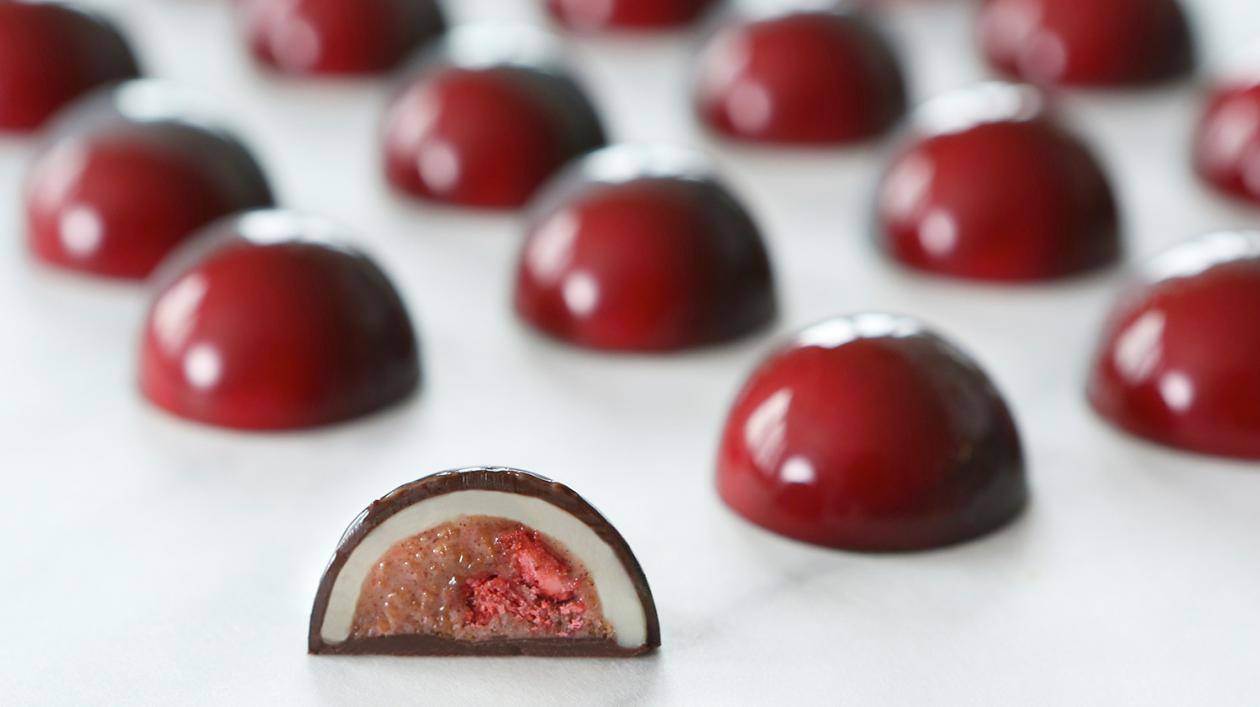
Photography credit: Paul Strabbing Photography (http://www.paulstrabbing.com/)
Melissa's workplace is Atelier Melissa Coppel in Las Vegas, NV You can find more detailed descriptions of each of the desserts here: http://melissacoppel.com/en/portfolio.html
Yuzu, Yogurt & Strawberry Bonbon
When developing your own recipes, it is important to understand the properties of each ingredient.
COCOA BUTTER:
Cocoa butter has the ability to harden the mass.
COUVERTURES:
Couvertures are responsible for giving a product chocolate taste. In certain cases, it is not precisely what we are looking for, so I use white chocolate. Couvertures also have a hardening effect because they contain cocoa butter. That being said, a recipe with high cocoa butter content will have a dry and unpleasant texture.
PECAN PASTE:
Pecan paste has a mild taste compared to other nuts like pistachio or hazelnut. In this case, that is ideal so that we can taste the strawberry flavor. Nut pastes have the property of softening the cocoa butter. We can conclude that finding a good balance between cocoa butter and/or chocolate versus pecan or other nut pastes is what will give us the perfect recipe and texture at the end. We want it to be hard to manipulate but soft enough that it melts in our mouths.

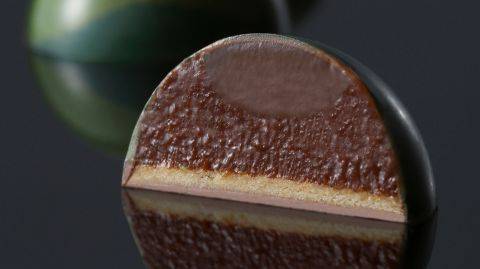
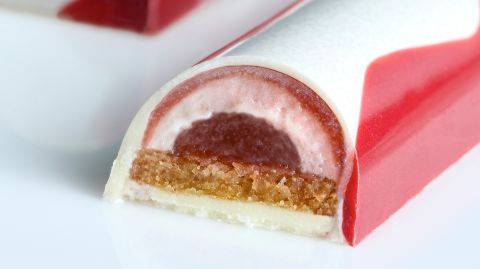
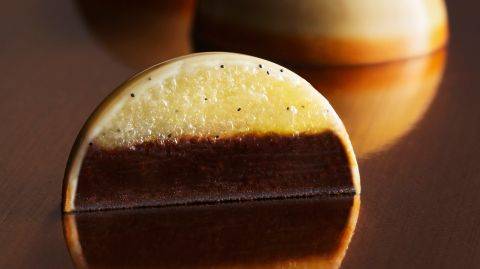
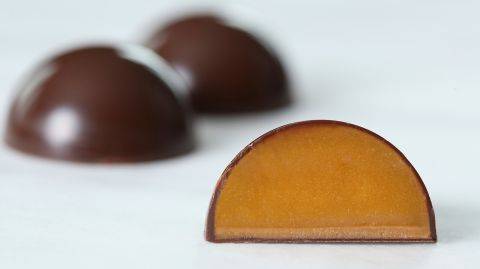


Comments